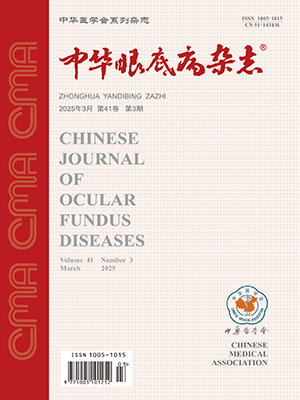Objective To investigate the correlation factors of macular pucker after vitrectomy, and compare the surgical effect between secondary and idiopathic epiretinal macular membrane.Methods A study of 26 consecutive patients (26 eyes), in which 18 were diagnosed as secondary epiretinal macular membranes and 8 as idiopathic epiretinal macular membranes, underwent par plana vitrectomy, vitreous cortex separation, and peeling off of the epiretinal macular membrane. The follow-up period was within 3~12 months. Preoperative and postoperative examination included visual acuity, fundus photography, and optical coherence tomography in some patients.Results Among the 18 patients with secondary epiretinal macular membranes, 9 (50.0%) were related to vitreous surgery. There was statistical difference between cryoretinopexy to giant retinal tear and endolaser (χ2=12.24,P<0.05). Eleven patients (61.1%) with secondary epiretinal macular membranes were related to vitreous hemorrhage before or after surgery. We found all macular puckers removed in post-operative examination. The metamorphopsia disappears after 3 months in 8 patients (30.8%), and the situation was better in 18 (69.2%). The visual acuity of the patients with idiopathic epiretinal macular membranes improved 3 lines averagely after operation, and the best-corrected visual acuity was 0.8. The patients with secondary epiretinal macular membranes improved 1.33 lines averagely after vitreous and retinal surgery, and the best-corrected visual acuity was 0.6. Conclusion Cryoretinopexy to giant retinal tear and vitreous hemorrhage before or after surgery are the risk factors of secondary epiretinal macular membranes. Idiopathic epiretinal macular membrane has a better surgical effect than secondary one. (Chin J Ocul Fundus Dis,2003,19:90-92)
Citation: LV Lin,Xiu lan,LI Yonghao. Analysis of the correlation factors and vitrectomy of epiretinal macular membrane of 26 patients. Chinese Journal of Ocular Fundus Diseases, 2003, 19(2): 90-92. doi: Copy
Copyright © the editorial department of Chinese Journal of Ocular Fundus Diseases of West China Medical Publisher. All rights reserved




